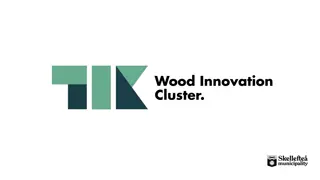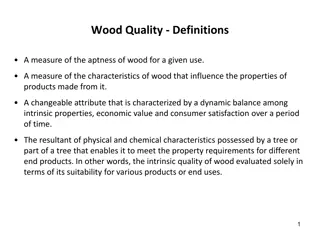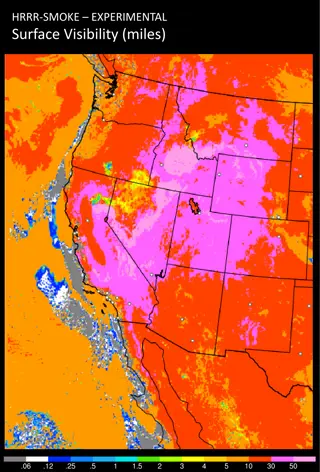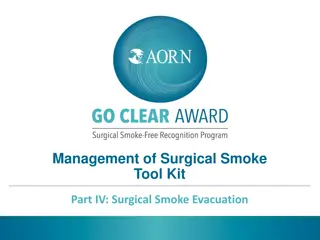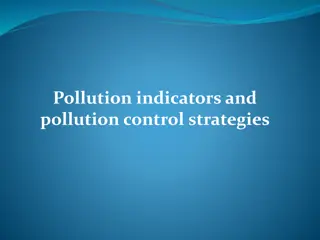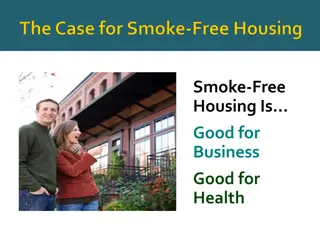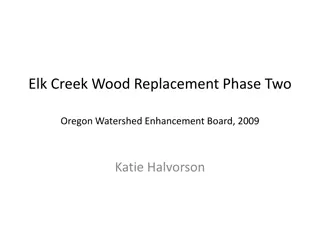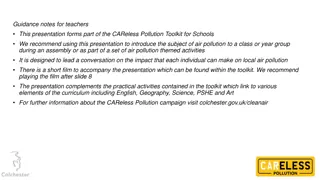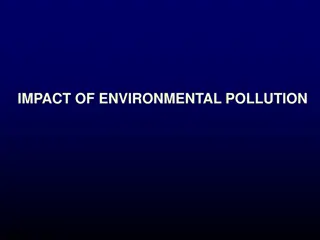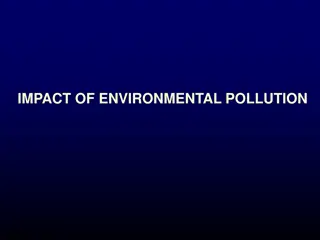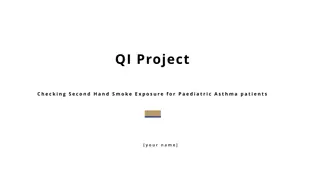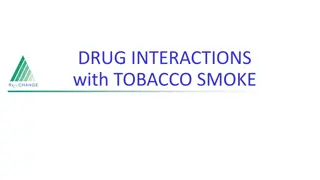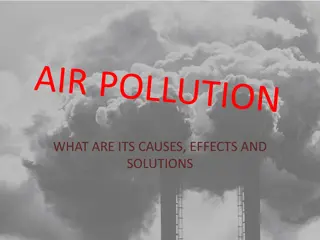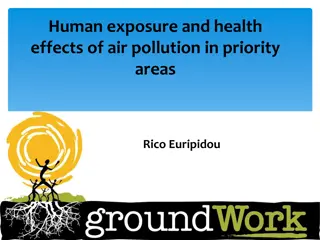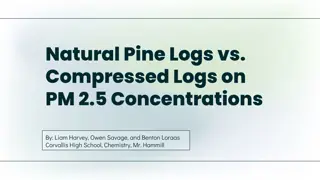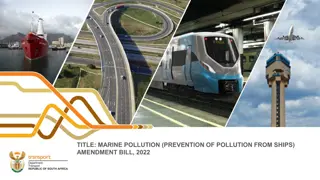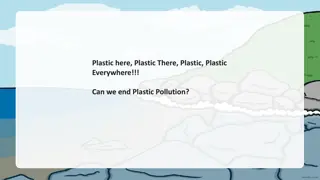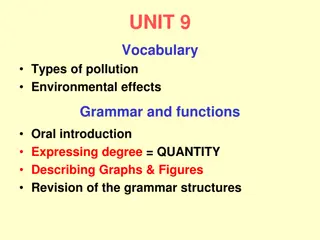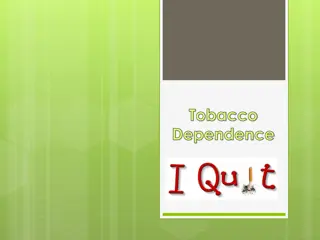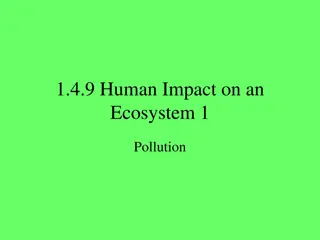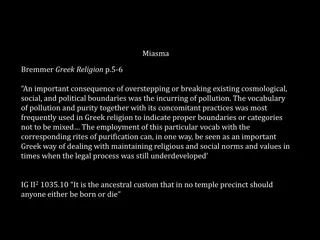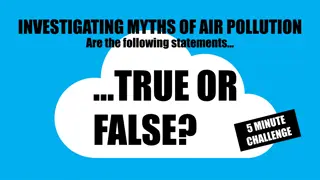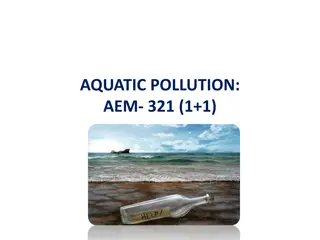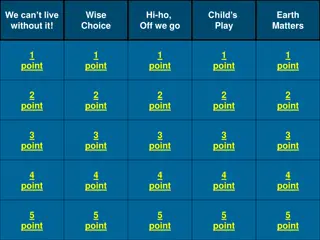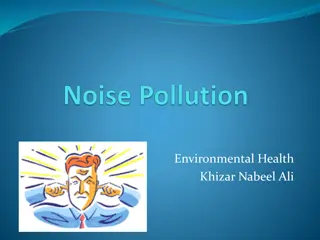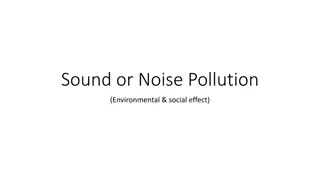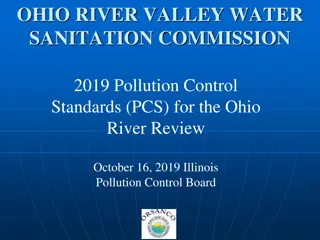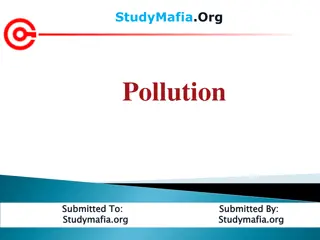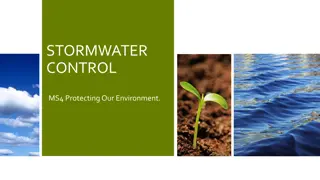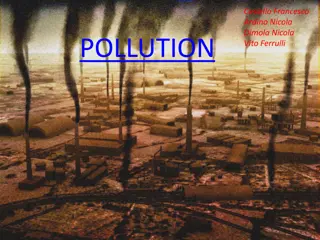Strategies for Reducing Wood Smoke Pollution in Residential Areas
Recommendations from the Wood Smoke Pollution Reduction Strategies (WSPRS) framework aim to curb emissions from residential wood combustion, highlighting the need for national programs and cleaner appliances. Key focus areas include reducing high-emitting devices, promoting cleaner technologies, and encouraging participation from income-qualified households while ensuring program sustainability and coordination.
Download Presentation

Please find below an Image/Link to download the presentation.
The content on the website is provided AS IS for your information and personal use only. It may not be sold, licensed, or shared on other websites without obtaining consent from the author. Download presentation by click this link. If you encounter any issues during the download, it is possible that the publisher has removed the file from their server.
E N D
Presentation Transcript
WOOD SMOKE POLLUTION REDUCTION STRATEGIES (WSPRS) FRAMEWORK RECOMMENDATIONS Understanding & Reducing Residential Wood Combustion Emissions: December 1, 2016
Background April 2015 meeting 30+ Air Directors met and developed recommendations to guide Workgroup formed in 2016 to discuss programs and identify best practices EPA regional and federal offices 24 state and local agencies 3 MJOs
Nationally Residential Wood Smoke Accounts for: 20% of total stationary and mobile polycyclic organic matter emissions 50% of all area source air toxic cancer risks Fine particle pollution (PM2.5) o 6% (382,000 tons) of total PM2.5 direct emissions Residential wood combustion emits 5 times more PM emissions than all of these combined: o US petroleum refineries o Cement manufactures o Pulp and paper plants
PM2.5 Emissions by Key Source Types in New York Wood: heats 1.2% NY homes primary heat &~453,000 stoves Natural gas: heats 51.7% NY homes (>3.6million) Home heating oil: heats 33.1% of NY homes (>2.3 million) 18,000 15,968 16,000 14,000 11,763 12,000 10,000 8,000 6,000 2,930 2,652 4,000 2,465 1,509 650 2,000 127 80 0 4 Annual Tons PM2.5
Framework 2015 NSPS creates opportunities to address the existing inventory and build markets for cleaner appliances Inventory of high emitting devices needs to be reduced Current programs are not sustained or coordinated National program with sustained funding is needed National program will only be effective if structured to incentivize the most effective strategies Wood Smoke Pollution Reduction Strategies (WSPRS) framework could serve as a guide with the recognition that agencies will need to tailor programs to reflect air quality and energy mix
Guiding Parameters Focus on removing the highest emitting units. Promote installation of the least polluting devices encourage early adoption of cleanest and most efficient new technologies Incorporate fuel neutral components Ensure technologies get anticipated reductions Provide flexibility to include a range of approaches Require use of best practices Require use of best test methods and give preferential treatment (e.g., higher cash incentives) to devices tested with methods that best replicate real world emissions Use sliding scale incentives to encourage purchase of high efficiency, low emission appliances. Ensure program supports participation of income qualified households The agency sponsoring the program should be aware that they are committing to a resource intensive activity in terms of administrative support
Bounty Programs Recognition that bounty programs are under utilized to reduce old inventory Typical programs are round up that allow units to be dropped off or picked up Programs could purchase from local sources Craig s list Ebay Types of Eligible units Stoves Central heaters Prioritize removal of uncertified and exempt appliances, however, if funds allow, extend to any solid fueled appliance including coal units
Universe of Devices to Change-out Replacing cordwood or pellet wood appliances with a new demonstrably cleaner cordwood or pellet appliance Target removal of uncertified appliances Target removal of exempt appliances Replacing cordwood hydronic heaters or stoves with certified pellet- fired appliances Any NSPS certified appliance that doesn t meet Step 1 standards or has proof (via permanent label or bill or sale) that the appliance is more than 15 years old Wood to non-wood change-out (non-wood appliance such as oil-, gas-, propane- fired heating system or air-sourced heat pump or ground-sourced heat pump) Prioritize removal of uncertified and exempt wood appliances, however, if funds allow, extend to any solid fueled appliance including coal units. Fireplaces Prioritize removal of uncertified and exempt appliances, however, if funds allow, extend to any solid fueled appliance including coal units.
Change-outs: Key Components For the unit changed out Validated destruction of removed device For the new technology Technology Installation Operation
Destruction Permanently render inoperable drill holes into body of device Document destruction Photo Recycler receipts Affidavit
Change-out Technologies Air/ground source heat pumps Electric appliances Gas appliances Solar thermal Wood Pellet appliances with appropriate test methods Cordwood appliances in limited instances with lower incentives
Installation NO DIY installation Certified installer Wood Stoves NFI State Central Heating NY certification program
Operation Operator education/training Validate user training Fuel storage Pellets outside storage Cordwood split, stacked and covered storage Follow up service maintenance programs - service packs
Low Income Programs Incentives increased to cover 90% to 100% of total project costs Incentive for Tier 1 (highest efficiency, lowest emissions) units only Follow federal program guidelines, such as DOE s low income home energy assistance program, WIC, and Medicaid, for qualification in the program
Recommended Incentives Space Heating Performance level Device type Incentive guidelines Bounty program resale illegal Bounty program* resale legal Ductless air source heat pumps Stove to renewable or liquid central heating Nat Gas/Propane Stoves Higher levels for drop off versus pick up Higher levels for drop off versus pick up EnergyStar or local utilities efficiency/rebate guidelines $350/$200 $500/$350 $2,000 $2,000 -Canadian P4FE rating of >70%, direct vent, intermittent pilot -Emissions <2.0 grams per hour -Efficiency >75% based on stack loss method -need to specify acceptable test methods for program inclusion -Emissions <3.25 grams per hour -Efficiency >70% based on stack loss method over all burn categories $1,500 Pellet stoves Tier 1 $1,200 Pellet stoves/insert Tier 2 $750 Cordwood stoves Tier 1 -Emissions <2.0 grams per hour using approved cordwood test not currently available -Efficiency >75% based on stack loss method -service plan $750 Cordwood stoves Tier 2 -Emissions <3.25 grams per hour using approved cordwood test not currently available -Efficiency >70% based on stack loss method -service plan $350
Recommended Incentives Fireplaces Performance level Device type Incentive guidelines Electric fireplace insert $100 EPA Qualified Fireplace Retrofit Nat Gas/Propane log set Direct vent, intermittent pilot EPA Qualified $100 $100 Nat Gas/Propane insert Canadian P4FE rating of >70% Direct vent Intermittent pilot Step 2 levels Validation wood use >5 cords per yr $600 Cordwood insert $300
Recommended Incentives Central Heating Device type Performance level Incentive guidelines Bounty* Ground source heat pumps Ducted air source heat pump Any solid fuel device Utility efficiency/rebate guidelines Utility efficiency/rebate guidelines $1,500 $10,000 $5,000 Nat Gas/Propane central heat -AFUE >85% Wood central heating $4,000 $3,000 automated systems -0.10 lb/MMBtu for automated units testing with EPA M28HH requires that testing be conducted in all burn categories -0.20 for units testing with EPA M28 PTS with results in burn categories 1 and 4 -delivered efficiency including jacket losses >80% -Manual J sizing $1,500 manual systems
Stove Data Heating Technology Installed Costs Annual O&M Cost NOx CO PM Efficiency lb/mmBtu lb/mmBtu lb/mmBtu Uncertified Wood Stove NSPS Tier 1 Cordwood Stove NSPS Tier 2 Cordwood Stove NA $94 0.2 16.48 2.19 50% $4,031 $47 0.143 10.057 1.4 70% $4,231 $47 0.170 1.443 0.050 75% NSPS Step 1 Pellet Stove $4,121 $47 0.890 2.542 0.270 70% NSPS Step 2 Pellet Stove Natural/Propane Gas Stove Heat Pump (Stove Replacement) $4,121 $47 0.136 1.390 0.058 75% $2,690 $0 0.000005 80% $4,500 $0 Varies Varies Varies 293%
Boiler Data NOx CO PM lb/mmBtu lb/mmBtu lb/mmBtu Efficiency Uncertified OWB $0 $500 0.064 104.000 13.500 28% NSPS Step 1 Cordwood OWB $15,984 $500 0.132 16.600 0.393 39% NSPS Step 2 Cordwood OWB $20,000 $299 0.171 3.750 0.163 56% NSPS Step 2 Cordwood Boiler w/ TS $24,000 $346 0.171 3.750 0.143 85% NSPS Step 1 Wood pellet boiler $22,000 $315 0.170 1.390 0.037 65% NSPS Step 2 Wood pellet boiler $22,000 $315 0.170 0.030 0.023 73% NSPS Step 2 Wood pellet boiler w/TS $24,000 $362 0.170 0.030 0.021 85% Natural Gas Boiler $8,000 $75 0.170 0.05000 0.000038 75% Propane Boiler $8,000 $75 0.170 0.05000 0.000038 75% Fuel Oil Boiler $8,000 $131 0.00005 0.036 0.00005 80%
Furnace Data Heating Technology Capital Annual O&M Cost NOx CO PM Efficiency lb/mmBtu lb/mmBtu lb/mmBtu Uncertified Wood Furnace NSPS Step 1 Cordwood Furnace NSPS Step 2 Cordwood Furnace $0 $150 0.064 8.486 1.472 28% $6,299 $150 0.171 3.214 0.571 39% $6,599 $150 0.171 0.404 0.071 56% Natural Gas Furnace $5,864 $75 0.092 0.039 0.002 75% Propane Furnace $5,864 $75 0.158 0.022 0.011 75% Fuel Oil Furnace $5,677 $150 0.145 0.036 0.003 69%





